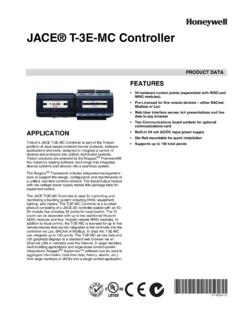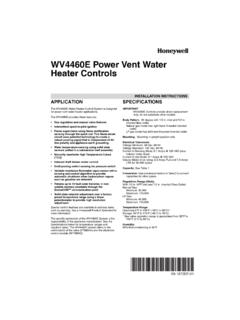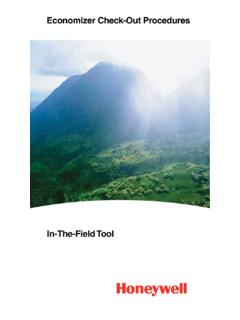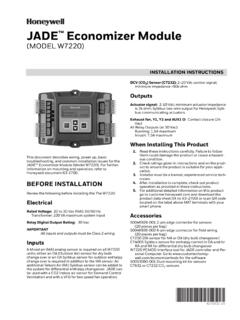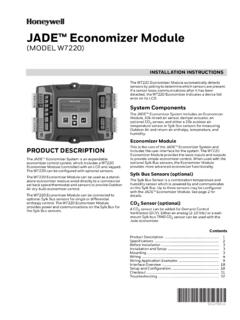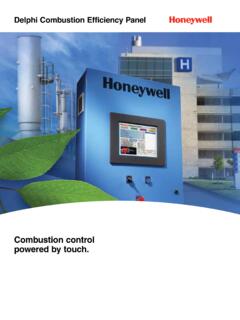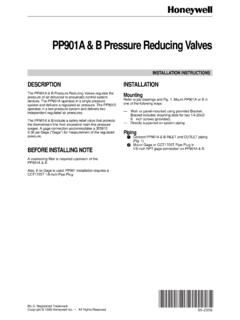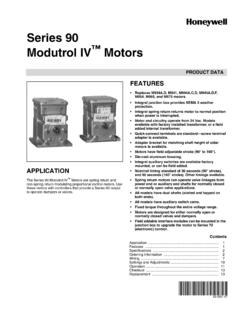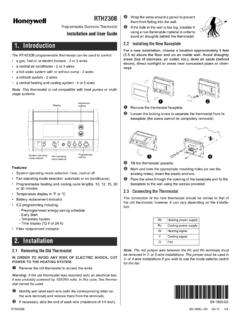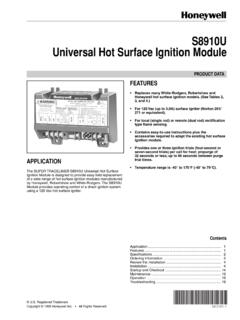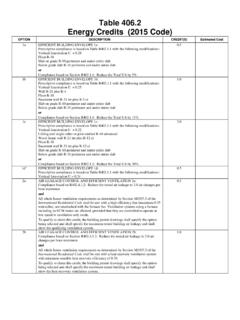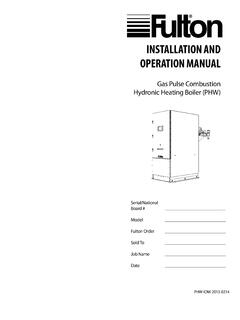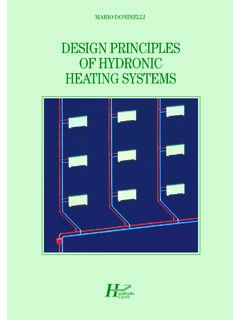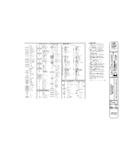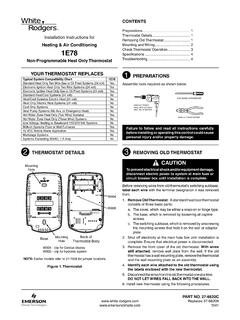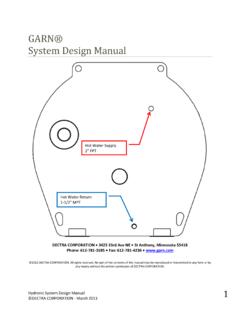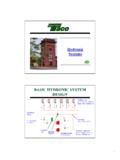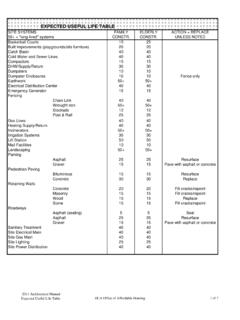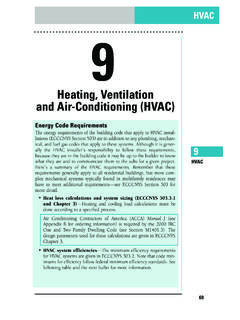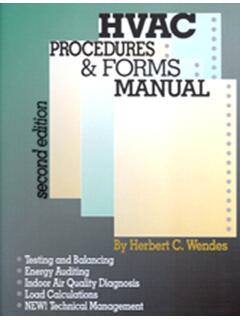Transcription of 71-97406 Controls for Oil-Fired Heating
1 TRAINING71-97406 3 Controls FOROIL- fired HEATINGCONTROLS FOR Oil-Fired HEATING71-97406 32 TABLE OF CONTENTSCONTROLS FOR Oil-Fired 3 FUEL OIL AND OIL BURNING 4 Fuel Oil Characteristics.. 4 Oil Burner Types .. 5 Oil-Fired Furnace 5 Oil-Fired System Operation .. 6 IGNITION 7 Oil-Air Mixture .. 7 Energy (Heat).. 7 Spark 8 OIL BURNER control 9 Automatic control .. 9 Flame Detection and the Safety Switch .. 10 STACK 13 Stack Relay Operation .. 13 Stack Relay Location .. 14 Stack Detector 14RA116 .. 14RA117 .. 15 Replacement Stack Relays .. 15 CAD CELL PRIMARY 16 Cad Cell Operation .. 16 Cad Cell Location and Hookup .. 17 The Flame Sensing 18 Sequence of Operation: Cad Cell Primary control .
2 20 Overview: Cad Cell Vs. Stack Relay Primary Systems .. 20 OIL PRIMARY 22 The R8184 Oil 22 The R7184 Interrupted Electronic Oil Primary .. 23 The R8182 Combination Oil Primary/Hydronic Controller .. 26 Overview: Primary Oil Burner control Function 28 Aquastat 30 OIL control SERVICE 31 Tools and equipment .. 31 Basic control 31 Trouble 31 Troubleshooting Sequence .. 31 Visual Detection Systems .. 33 For Visual Detection Systems .. 33 Thermal Detection Systems .. 35 For Thermal Detection Systems .. 40 Controls FOR Oil-Fired HEATING371-97406 3 Controls FOR Oil-Fired HEATINGH eating and air conditioning Controls are often the most complicated part of a residential Heating and cooling system.
3 Some of this complexity comes from the added sophistication needed to incorporate energy conservation features into the equipment . Other increases in control complexity are related to the introduction of new equipment . Your customers are being faced with new control systems all the time and you are one of the people they look to for information on applications and component job is also complicated by the fact that there are literally thousands of Controls that you are expected to know something about. You can be more effective in your job if you can make authoritative recommendations to your customers regarding the replacement Controls they need to do their book has been researched and written especially for you.
4 It presents the major families of oil Controls used in our industry and gives information on their this book as a reference during your Honeywell control Pro training program, and as a continuing resource on your job from now FOR Oil-Fired HEATING71-97406 34 FUEL OIL AND OIL BURNING EQUIPMENTFuel Oil CharacteristicsFuel oil is graded based on its physical characteristics. Grades 1 and 2, the lighter grades, are most frequently used for residential applications. Grades 4, 5 and 6 are heavier and are normally used in commercial and industrial grade is determined by measuring certain physical characteristics of the oil. The most important of these measurements include weight, viscosity, and flash and fire points.
5 The distillation range, water and sediment content, and pour point are also usually oil weight can be defined using various scales, but the most common is American Petroleum Institute (API) gravity. API gravities range from 0 to 99 degrees. Lighter grades of fuel oil have higher API gravities. An API gravity of 20 degrees, for example, is equivalent to about pounds per gallon of oil; 40 degrees API is equivalent to about pounds per the API number increases, the Btu content decreases, so lighter grades of fuel have lower Btu content than heavier chart below lists differences in Btu content of the various grades of fuel 1. Btu Content per Oil is determined by measuring the amount of time required for a sample of oil to flow naturally through a capillary restriction.
6 The heavier the oil, the longer it takes (and the higher the viscosity). The heavier oils are too viscous to atomize properly at room temperature. Because viscosity can be reduced by raising the temperature of the oil, the heavier oils are preheated before combustion. The flash point and fire point are determined by Heating the oil while exposing it to an open flame. As the oil is heated, oil vapor collects above the surface of the liquid. The oil temperature when flash combustion occurs is called the flash point. The fire point is the temperature at which the surface vapor will continue to burn for at least five seconds. These temperatures indicate the degree of fire hazard present in stored fuel oil.
7 For example, No. 2 oil has a minimum flash point of 110 F (43 C). This means that fuel is unlikely to ignite spontaneously during storage in basement tanks, but outdoor tanks should be placed to avoid temperatures above 110 F (43 C).The distillation range is determined only for the lighter grades of oil. This test involves Heating a sample and recording the temperatures at which various percentages of the initial volume of the sample have been distilled and sediment content are determined by whirling a sample of oil in a centrifuge. The water and sediment settle to the bottom where they can be measured. Too much water or sediment in the oil can clog the burner and interrupt the flame.
8 Heavier grades of oil usually contain more of these point is the temperature at which the oil can no longer be poured. It is an important factor when the oil must be stored outdoors in a cold of grade, fuel oil will not burn as a liquid. It must be vaporized and mixed with air before it will burn. More volatile fuels such as gasoline vaporize readily at room temperature. They therefore ignite easily unlike fuel relative ease with which a fuel oil can be vaporized determines the method used to prepare it for combustion. Since the lighter fuel oils vaporize more easily than the heavier oils, they require less elaborate and expensive equipment to burn the oil.
9 They also have colder pour points, which allow them to be stored outdoors even in cold climates. These characteristics make the lighter fuel oils the fuels of choice in residential Oil-Fired Burner TypesFuel oil combustion requires that the fuel oil be atomized (broken into droplets), mixed with air, and then ignited. There are two basic types of oil burners, which are classified by their methods of preparing fuel for combustion. The two types are vaporizing burners and atomizing 1. Oil burner burners depend on natural evaporation to provide oil vapor for combustion. These burners are usually gravity fed and have a standing pilot. They are often manually Fuel Oil GradeBtu Per GallonNo.
10 1 Distillate Oil137,400No. 2 Distillate Oil139,600No. 4 Fuel Oil145,100No. 5 Residual Oil148,800No. 6 Residual Oil152,400M8123 OIL BURNERPOT TYPEBURNERROTARY TYPEBURNERGUN TYPEBURNERVAPORIZING BURNERSATOMIZING BURNERSType determined by method of fuel breakdown1. Fuel delivery - gravity2. Manual or thermostat controlled3. May or may not have blower4. Usually direct standing flame 1. Fuel delivery - spinning cup2. Thermostat controlled3. Blower required4. Spark ignition 1. Fuel delivery - pump and nozzle2. Thermostat controlled3. Blower required4. Spark ignition OIL BURNER TYPESCONTROLS FOR Oil-Fired HEATING571-97406 3controlled and have either a natural or forced draft.
